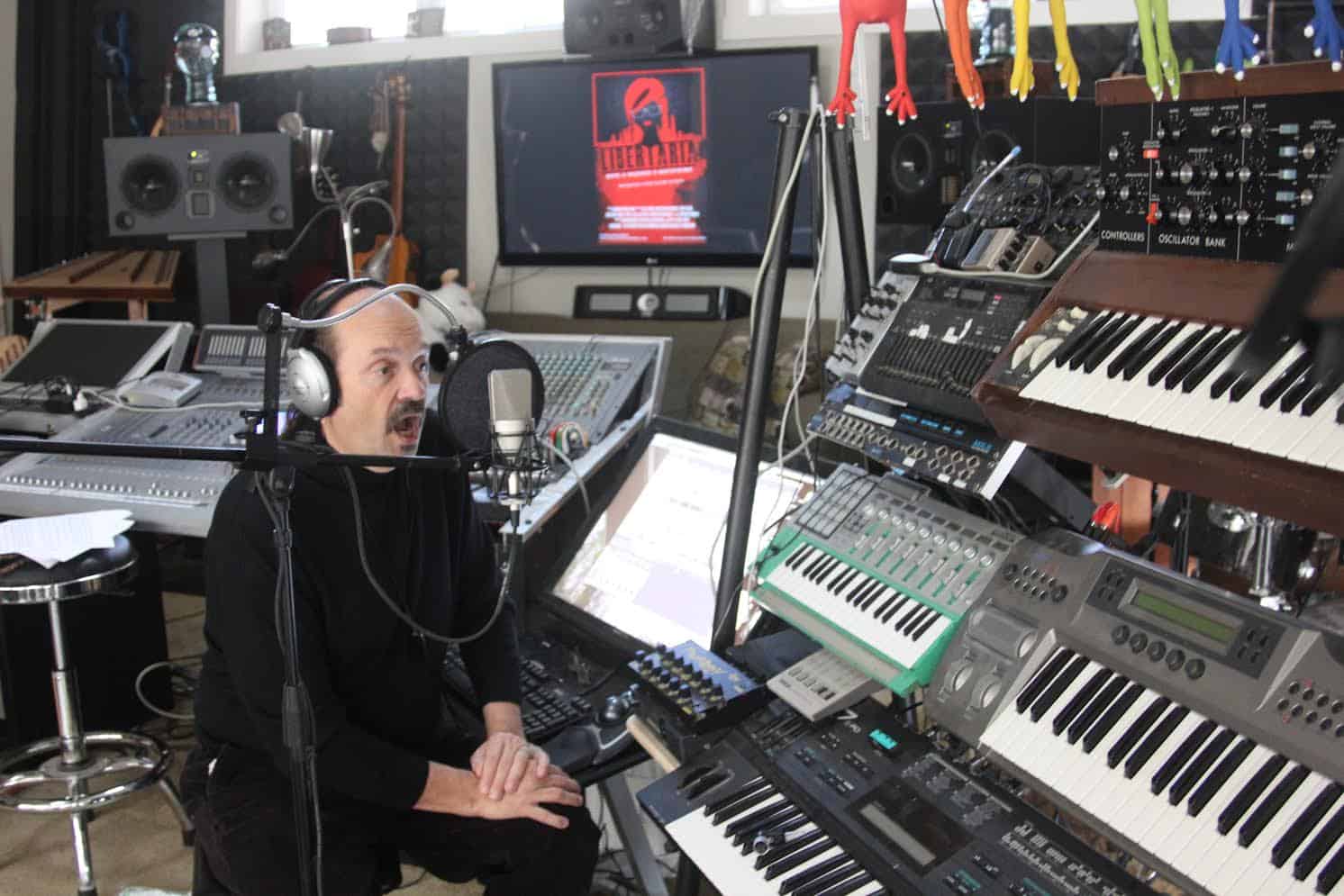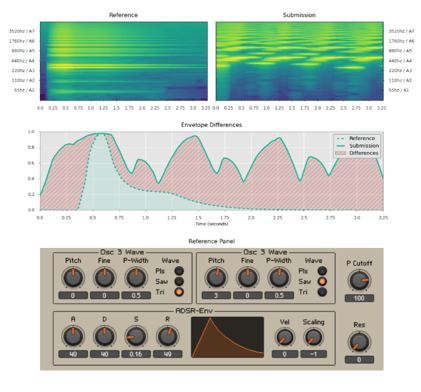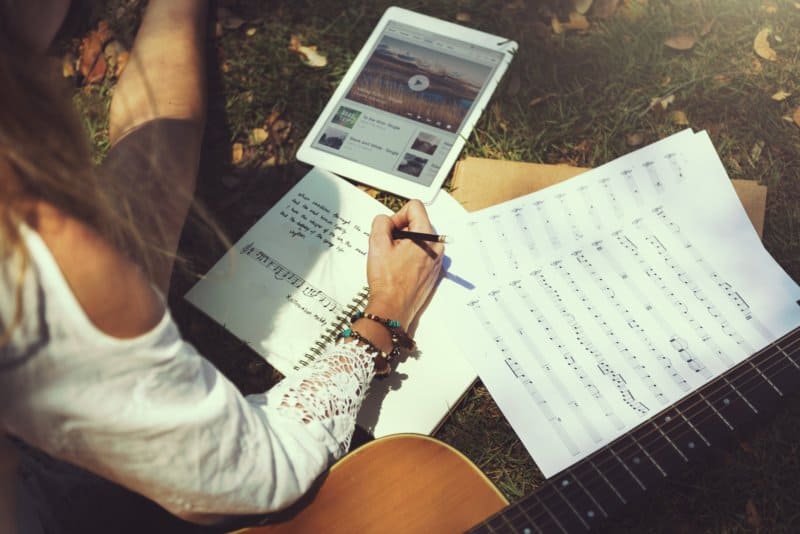Learning Music Online 2: AI, Social Networks, and the Future
In part 2 of this series on online music education, Prof. Cook examines how students are using social networks to learn and collaborate, and why robots are a good fit for music education.
Editor’s note: This is a guest post from Perry Cook. Dr. Cook is the co-founder of Kadenze, a Professor Emeritus at Princeton University, and a Research Coordinator and IP Strategist at Smule, Inc.
In Part 1 of this series we looked at the history and current state of learning music and art online, and how such courses were often studied remotely (i.e. off-campus), or “by correspondence” as it used to be called long ago. We also looked at real-time networked possibilities for music lessons and ensemble performances. Now we will examine new and future aspects of online music education.
Music Education in the Age of Social Networking

Dr. Cook at Humbug Sonic Arts, his home studio in rural Southern Oregon. Photo Credit: Stacie Brink.
One of the most important things about education can be learning with others but, in the arts, the social/collaborative aspects are especially important. Music students play together in ensembles, and many classes in the arts involve critical evaluation and feedback from peers and instructors. As students learn to critique the work of others, and to receive comments and suggestions, they also refine their skills and get ideas to adapt to their own future art-making.
Teleconferencing applications and ideas adapted from social media can provide mechanisms for students to share and critique work. Many online courses provide or require “peer grading.” Course galleries, student portfolios, and discussion fora are woven into the instructional design of most courses at Kadenze.com, requiring students to share and provide meaningful comments and suggestions as part of their overall grade. Some online programs use Google Hangouts, Skype, or other systems to bring groups of students together. Many instructors regularly host virtual “office hours” or online AMA (Ask Me Anything) sessions.
Many musicians and students have availed themselves of social/mobile music-making apps to hone their skills and engage with others around the world. The popular Sing! Karaoke app by Smule affords millions of global users the ability to sing solo, or in duets and virtual choirs. Some popular songs in the catalog even let Sing! ers perform duets with the original artist, and some Sing! performances and duets have launched new careers. In a singing course taught on Masterclass by Christine Aguilera, students took to posting Sing! Karaoke “selfie” songs on Facebook, creating an ad-hoc user group there (a group that was named as “one of the kindest corners of the internet” by an article in Racked). Clearly, the influence and potential of the social space has just begun to be investigated and exploited in online music education.
Much can still be done to push the envelope of real-time (or perceived real-time) interactions in music education. As mentioned in Part 1 of our series, ideas from Stanford CCRMA’s online course in networked musical performance could hold rich opportunities for high-fidelity music lessons; as could studio/critique types of courses, where students and teachers (and robots — see below) listen to and comment on each other’s work.
A New Era: the Dawn of Robot TAs!
The area where technology can begin to make the most impact in music education is if DSP (Digital Signal Processing) and Machine Learning (or Artificial Intelligence, or AI) are combined and added into the mix. When the (pre)internet first began, in order to find things online I had to use Gopher and Archie, then WebCrawler, and later Lycos or AltaVista. But things started to get really interesting when Google introduced true AI into web searches.
We at Kadenze make extensive use of our own machine learning algorithms and user/instructor feedback displays to provide assessment and feedback on a large variety of media-rich assignment types, including sound/music, images (photos and hand-drawn pictures), and videos. This fits particularly well for many music courses, where a sound or music file can be evaluated automatically, marked, and displayed back to the student with indications as to how well they did at executing the required criteria. Figure 1 shows auto-grader feedback for a music production assignment, highlighting differences from a perfect submission.
Figure 1: Robot grader student feedback for production mixing/EQ assignment.
With machine-intelligent DSP-based music accompaniment software, some systems and companies have made strides toward attaining the elusive goal of private music instruction (or at least computer-mediated rehearsal). Roger Dannenberg (of CMU) has done seminal work on automatic music accompaniment systems, yielding SmartMusic, which is licensed to Coda. These systems were installed in music studios and practice rooms, and could “listen” to the student, accompanying them and noting/correcting mistakes as they were played. SmartMusic was then licensed to MakeMusic! Inc. and sold as downloadable computer software (on a subscription model). Dannenberg now works with Music Prodigy, Inc. to provide computer/mobile “Quantified Music Practice” applications. These allow students to rehearse their instruments with accompaniment, then transmit a machine-graded performance to their teacher.
The next installment of this series will delve specifically into how DSP and AI can bring music and arts assessment tools to online education at scale, allowing courses to be taken by thousands (or millions) of students at little incremental cost to the course creator(s) or platform.
The Future?
As more music courses become available online, we might wonder if it could be possible to earn an entire degree without even putting on pants and going to town. Indeed, as we discussed in Part I of this series, some schools already offer full degrees online. I envision a day (soon) when students can take a semester, a year, or even two years’ worth of a music or other art degree online, and then transfer into one of many programs to complete their degree. Or, if a student wishes to stop there, they will still be more educated in music/arts than most. If they’ve availed themselves of some technology courses (programming, production, design, and so on), they might be ready for a job right then and there.
Some schools and programs, such as the Program in Arts and Media Technology at the University of Texas, are developing new degrees where some subset of the courses will only be available online. Many others, such as the California Institute of the Arts now use the online versions of some courses to “flip” their on-campus classrooms; in such courses, they instruct students to watch the lecture videos and do the assignments, and then to come to class to discuss, critique, and share ideas. Many other schools are investigating new models for segmenting and refactoring their courses and degrees into components that work best online, and keeping other parts to be experienced in physical classrooms or studios.
The breadth of expertise and talent available in the knowledge leaders represented at Kadenze by the combined faculty of all of our partner schools would be impossible to assemble within a single brick-and-mortar art/music school. Only an online education platform could make such a “rock-star faculty” possible. Combining the best topics, content, and teachers with state of the art technology that enables us to offer course content and graded assignments (covered further in Part 3 of this series), there is massive new potential for teaching music and art to the world.
Perry R. Cook, PhD
Professor Emeritus, CS and Music, Princeton University
Co-Founder and Executive Vice President, Kadenze Inc.
also, Research Coordinator and IP Strategist, Smule, Inc.







